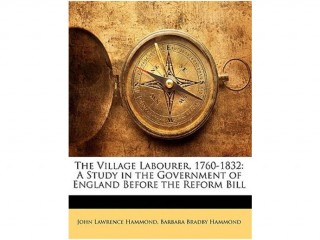
Lawrence And Barbara Hammond biography
Date of birth : -
Date of death : -
Birthplace :
Nationality : English
Category : Arts and Entertainment
Last modified : 2011-10-13
Credited as : Author, The Village Labourer, Lord Shaftesbury
The English historians John Lawrence Le Breton Hammond (1872-1952) and Lucy Barbara Hammond (1873-1961) were joint authors of a number of histories of the English working class.
Lawrence Hammond was born at Drighlington, Yorkshire, on July 18, 1872. His future wife, Lucy Barbara Bradby, was born in London in July 1873. Both were children of Anglican clergymen with working-class parishes, Lawrence's in the industrial north, Barbara's among the London docks. Both Lawrence and Barbara attended Oxford University, he at St. John's College, where he studied classics, and she at Lady Margaret Hall, where she was known as one of the most brilliant students of her time. They were married in 1901.
In 1897 Lawrence Hammond entered a career in journalism as a writer for the Leeds Mercury and the Liverpool Post. Two years later he became editor of the new liberal weekly, the Spectator, which had been launched to oppose British imperialism in South Africa. In 1907 he left journalism to become secretary of the Civil Service Commission for six years. He returned to journalism after the war as correspondent for the Manchester Guardian and remained with this newspaper for the rest of his life.
After their marriage, the Hammonds began work on a series of social histories of the British labor class, extending from the later 18th to the mid-19th century. The Village Labourer, 1760-1832 (1911) was the first to appear. In it they describe the changes that 18th-century parliamentary enclosures brought about in the villagers' way of life, the gradual isolation of the poor, and the laborers' revolts of the early 1830s. "The book, " wrote Gilbert Murray, "had on its readers almost the effect of a revelation." Enclosures and the transformation of the laboring class had been looked upon as the necessary requisites for Britain's industrialization. Historians had emphasized the way these had contributed to Britain's progress in the 19th century. Here, however, the Hammonds assessed the cost of industrialization to its victims. They showed the suffering and degradation of the dispossessed amid the material success and the idealism of the early 19th century. Their next work, The Town Labourer, 1760-1832, appeared in 1917, and the last volume in the trilogy, The Skilled Labourer, 1760-1832, in 1919. They also wrote Lord Shaftesbury (1923), The Rise of Modern Industry (1925), The Age of the Chartists (1930), The Bleak Age (1934), and C. P. Scott of the Manchester Guardian (1934).
The Hammonds spent most of their later lives at Picott's End outside London. Here, wrote Arnold Toynbee, they lived in "Desert-Father austerity, " surrounded by dogs, cats, and "a permanent congregation of birds, standing as expectantly as the birds in Giotto's picture of St. Francis."
Lawrence Hammond died on April 7, 1952. Barbara Hammond, grieving, went into a slow and irreversible decline. She died, after prolonged illness, on Nov. 14, 1961.
There is an excellent biographical study of Lawrence Hammond by R. H. Tawney in Proceedings of the British Academy, vol. 46 (1960). A charming personal memoir of the Hammonds is in Arnold J. Toynbee, Acquaintances (1967). See also Matthew A. Fitzsimons and others, eds., The Development of Historiography (1954), and Arthur Marwick, The Nature of History (1970). □
















